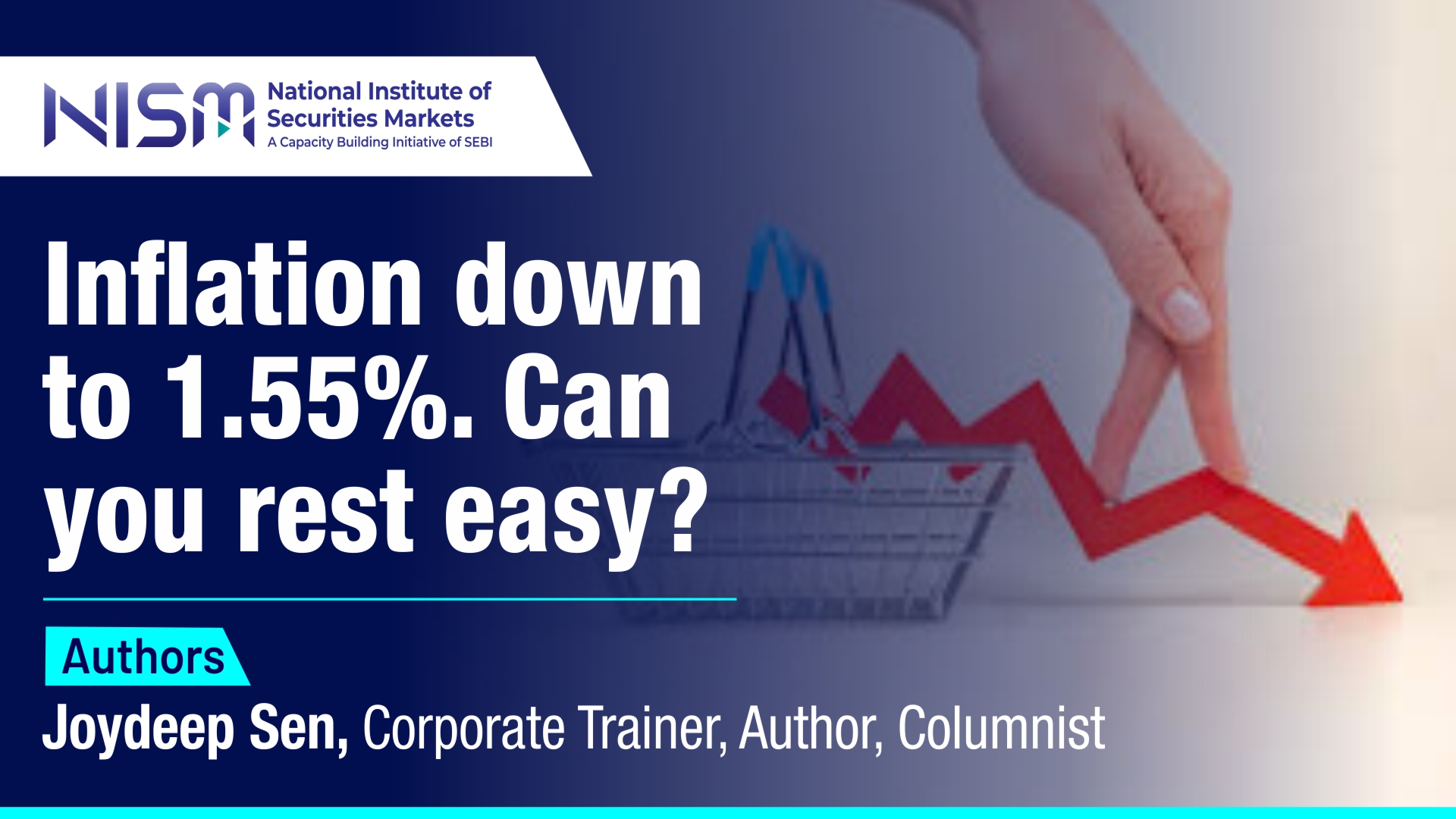
Inflation is measured in a straight-jacketed manner. But for 144 crore Indians, a single number can have many meanings.
Joydeep Sen
You have heard that inflation reduces the purchasing power of money, which implies you require more money to buy the same amount of goods or services in future. This is an age-old truth and will remain true in future as well. Today, we will provide you with some food for thought on how to view inflation.
How is inflation measured?
To gauge inflation, we examine the data reported by the government. The most widely used gauge is consumer price inflation (CPI). Another metric is wholesale price inflation (WPI). We will discuss CPI, as the Reserve Bank of India uses it for policy formulation. The latest declared data is for July 2025, which is 1.55%. With the inflation rate having eased to only 1.55 %, does it mean you would inflate your expenses by a more benign number than you thought of earlier? Not really.
Let’s examine how inflation is measured and assess the relevance of the data. The rate of price increase is calculated for a defined basket of goods and services. The starting point of the series, which dates back many years to 2012, is set at 100. Over the years, as prices went on increasing, the value of the index increased as well. Currently, the index value is 194.2 in June 2025. Inflation is measured year on year: for example, for June 2025, the index is compared with that of June 2024, which was 190.2 and the outcome is 2.1%. The percentage increase in the index over the course of one year is what is announced, and we react to it.
There is a flaw in this method, followed not just in India but all over the world. In this year-on-year computation, the price level of the previous year has a significant impact on the inflation data. Intuitively, when we think of inflation, we think of an increase in current prices. That is, of course, relevant, but the price level of the previous year is as applicable in determining the outcome, e.g. 2.1 % in June 2025. This is known as the base effect, where the base (denominator in the equation) influences the data. If inflation was higher in the previous year, and consequently the inflation index was higher, inflation this year is that much lower. And vice versa.
The other issue is the composition of the basket. Almost half the CPI measurement basket comprises food or food-related items. This would be true for some people who are just above the subsistence level. People who are in a position to save and invest a chunk of their earnings would not need to spend as much on food. The broad issue is that there is only one basket for measurement nationwide. However, the consumption basket of all the 144 crore people of the country is different. It is not possible to have multiple baskets across the country; there are none anywhere in the world. Hence, the available inflation data is the nearest proxy for gauging and incorporating into your financial plans.
How should you measure?
Theoretically, you look at your consumption basket and measure inflation accordingly. However, it is practically difficult, near-impossible for individuals to do it consistently. One approach could be to consider the goal you are saving and investing for. If the goal is a child’s education abroad, that inflation would be different from the inflation of vegetables in India, a significant variable in the CPI basket. When considering a purchase, such as a house or a car, you can evaluate it accordingly. If you can gather working data on the item you are looking at, you are better off than looking at the generic CPI data of a government-decided basket.
Even with the available data, it is possible to avoid the base-effect flaw by looking at a longer period. As an example, the CPI index was 194.2 in June 2025; the data is available on the website pib.gov.in. Five years ago, in June 2020, it was 151.8 and ten years ago, it was 123.6. The compound annualised growth rate (CAGR) inflation over five years is 5.05% and over ten years is 4.6%.
Professional guidance
When formulating your financial plan, it is advisable to seek professional input. If you are doing it yourself, even if you are savvy, you may miss out on specific nuances. An experienced financial planner can guide you adroitly. You must ask your financial adviser the right questions, not only about the expected returns on your portfolio. In the current context, inflation can be managed in tandem with your planner. You can form a rough estimate of your consumption, e.g., X% on food, Y %on education, or Z% on discretionary consumption. Accordingly, you can discuss with your planner the basis for the assumed rate of inflation for your expenses five or ten years from now.
Inflation is not under your control. You need not fret over it or plan your consumption basket around it. You are earning, saving, and investing for a reason. Your finances should not go haywire due to deficient planning. Inflation is a cog in this wheel; put the best estimate in your Excel spreadsheet.
Published in Economic Times Wealth on 18 August 2025
Author: Joydeep Sen, Corporate Trainer, Author Columnist

Inflation is measured in a straight-jacketed manner. But for 144 crore Indians, a single number can have many meanings.…

Today’s business landscape is volatile and riddled with fraud risks emerging from rapid digitalization, lack of adequate control measures, and…

India’s urban transformation is accelerating—with over 600 million people projected to live in cities by 2036 and urban regions already…
© 2025 National Institute of Securities Markets (NISM). All rights reserved.